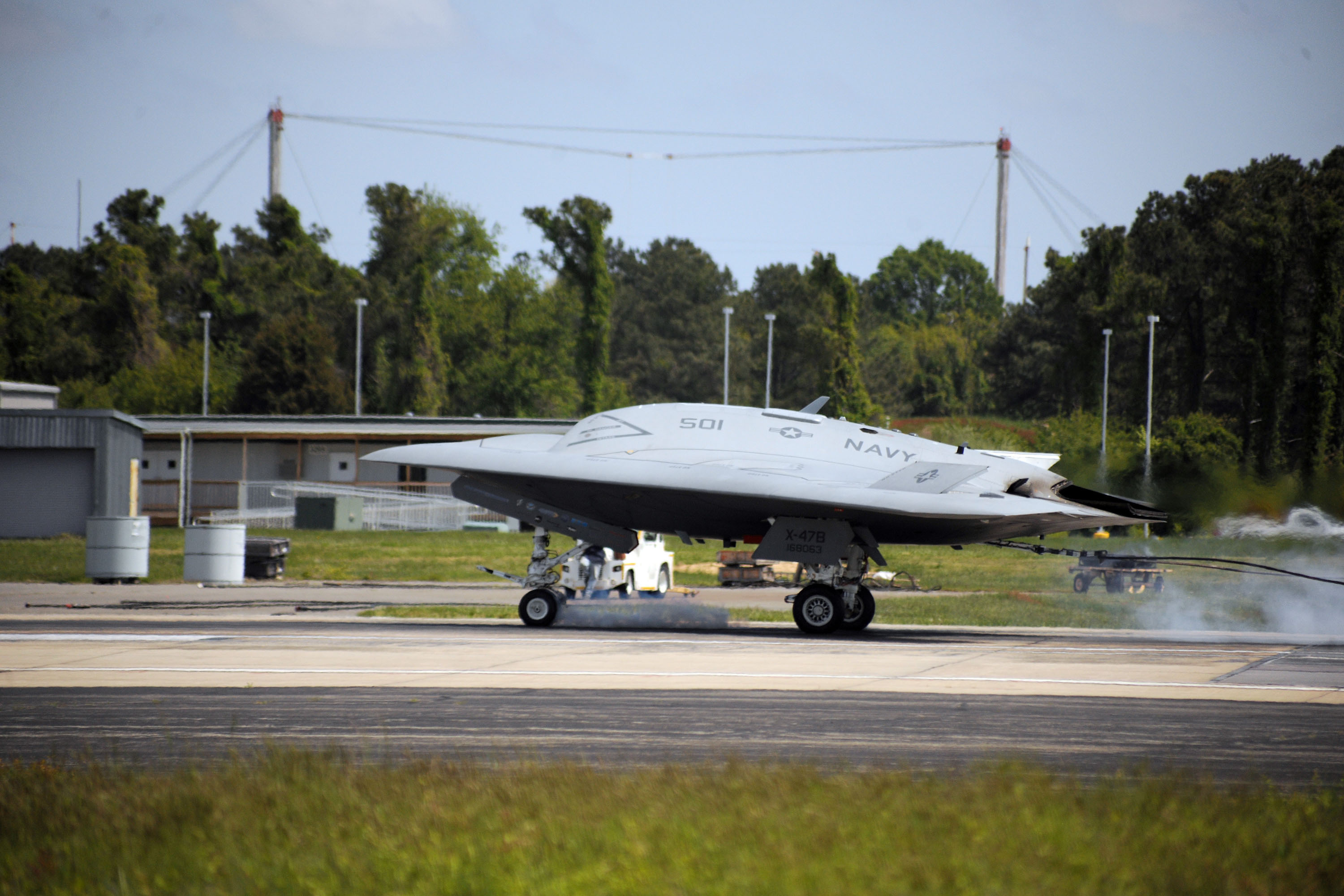

On May 16th, off the coast of Virginia, on the deck of the USS George H. W. Bush, the US Navy made actual history. It performed the first successful launch of an unmanned aircraft from the deck of a carrier. The X-47B Unmanned Combat Air System demonstrator (UCAS-D) completed its first ever carrier-based catapult launch from USS George H.W. Bush (CVN 77). The flight lasted for an hour and five minutes.
After the hour-long flight, the X-47B safely landed at Maryland’s Naval Air Station Patuxent River. Unfortunately, the X-47B didn’t land on the carrier after the flight, but no similar drones have managed that just yet. However, that is what the Navy is gearing up toward, and this test flight is just one preliminary step before attempting to land the unmanned aircraft on a carrier this summer. The drone did attempt two landings on the carrier, but both were waved off, as the landings were deemed not safe enough at the time. The Navy noted that the jet completed various successful landings on a land based “carrier deck”, but it ended up not being enough just yet. The drone has wings that can be folded in to reduce the overall size of the craft, making it easier to store on the carrier once successful landings are made possible.
The X-47B flight also marked some other momentous occasions in the world of flight. It became the first tailless aircraft to take off from a carrier deck, as well as being the first jet with a low observable stealth profile to launch from a carrier deck. Along with those feats, the X-47B has now become the first autonomous, unmanned jet to fly in the US military.
